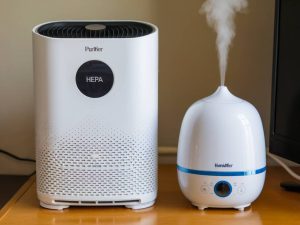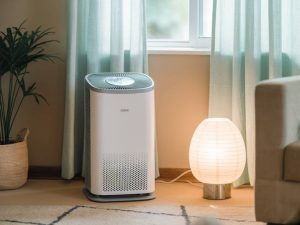The Link Between Indoor Air Quality and Workplace Productivity

The Link Between Indoor Air Quality and Workplace Productivity
« `html
The Importance of Indoor Air Quality in the Workplace
Indoor air quality (IAQ) plays a crucial role in employee health, comfort, and overall productivity. Poor air quality can cause a range of issues, from fatigue and headaches to serious respiratory conditions. For businesses, ensuring clean indoor air isn’t just a health and safety requirement—it’s a key factor in workplace efficiency and employee performance. But how exactly does air quality impact productivity?
How Poor Indoor Air Quality Affects Employee Performance
When employees work in an office with inadequate air quality, their cognitive function and work performance can be negatively impacted. Several studies have shown direct correlations between air pollution and reduced workplace productivity. Some of the main factors include:
- Reduced Cognitive Function: High levels of carbon dioxide and pollutants can impair decision-making, problem-solving, and concentration.
- Increased Sick Days: Poor air quality can lead to respiratory infections, allergies, and other health concerns, increasing absenteeism.
- Fatigue and Discomfort: Insufficient ventilation and excessive pollutants can cause tiredness, reducing employee engagement and morale.
- Decline in Overall Work Satisfaction: A workspace with stale air or unpleasant odors can make employees feel lethargic and unhappy.
These issues do not just affect individual employees but can also impact company productivity as a whole. Businesses that overlook air quality may experience higher turnover rates and reduced efficiency.
Key Indoor Air Pollutants in Office Environments
Understanding the sources of indoor air pollution is crucial for making improvements. Common pollutants found in office buildings include:
- Volatile Organic Compounds (VOCs): These are emitted from office furniture, carpets, paints, and cleaning products. Long-term exposure to VOCs can lead to headaches, dizziness, and respiratory issues.
- Carbon Dioxide (CO2): High levels of CO2 due to poor ventilation can cause fatigue and impair cognitive function.
- Particulate Matter (PM): Tiny particles from dust, smoke, and outdoor pollutants that can enter the building and affect respiratory health.
- Biological Contaminants: Mold, bacteria, and viruses can spread through HVAC systems, leading to increased illnesses among employees.
Ways to Improve Indoor Air Quality in Workspaces
Companies can take proactive steps to enhance air quality and create a healthier work environment. Here are some actionable strategies:
- Invest in High-Quality Ventilation Systems: Proper air circulation is essential to remove pollutants and maintain fresh air in indoor spaces.
- Use Air Purifiers: HEPA filters and air purifiers can help filter out harmful particles and allergens.
- Monitor and Control Humidity Levels: Keeping humidity between 40-60% prevents mold growth and reduces airborne contaminants.
- Reduce the Use of Chemicals: Opting for eco-friendly cleaning products with low VOC emissions can minimize harmful pollutants.
- Encourage Natural Ventilation: Opening windows and incorporating indoor plants can improve air quality by allowing natural airflow and oxygen exchange.
- Conduct Regular Maintenance: Cleaning air ducts, HVAC systems, and office spaces ensures that dust and contaminants do not accumulate.
By implementing these measures, businesses can foster a healthier work environment, leading to improved employee well-being and efficiency.
The Link Between Air Quality and Workplace Productivity
Numerous studies confirm that improved indoor air quality leads to higher workplace performance. Research conducted by Harvard University found that employees working in well-ventilated offices with low CO2 and VOC levels performed significantly better than those in poorly ventilated spaces. Their ability to process information, use strategic thinking, and respond to crises improved dramatically.
Additionally, companies investing in better air quality notice a positive return on investment. With fewer sick days and increased employee satisfaction, businesses experience higher efficiency and overall workplace harmony. In competitive industries, even a small improvement in air quality can lead to higher employee engagement and performance.
Prioritizing Air Quality for a More Efficient Workplace
Air quality often goes unnoticed in workplace discussions, yet it has a profound impact on employee health and productivity. Employers who take steps to ensure good indoor air quality not only support a healthier workforce but also boost performance and job satisfaction. Small changes, such as improving ventilation, using air purifiers, and reducing chemical emissions, can make a significant difference.
Investing in indoor air quality is not just an environmental concern—it’s a business strategy. An office with clean, fresh air fosters a more productive, focused, and engaged workforce. As more companies recognize the value of workplace air quality, ensuring a healthy indoor environment will become a priority for growth and success.
« `








